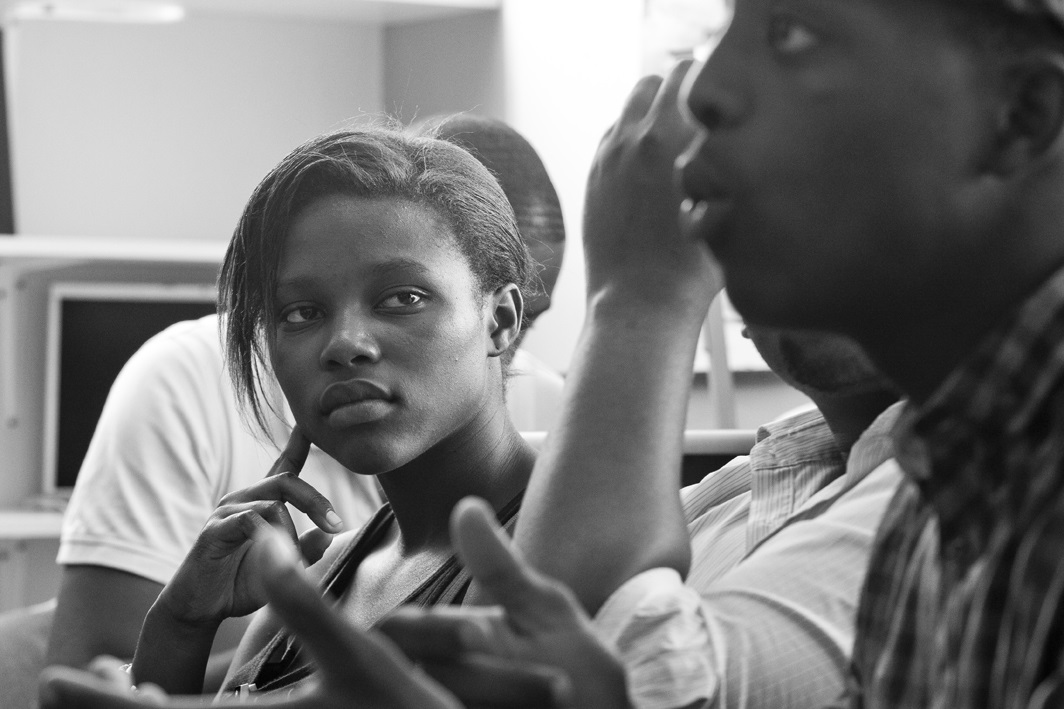- About
- Topics
- Picks
- Audio
- Story
- In-Depth
- Opinion
- News
- Donate
-
Signup for our newsletterOur Editors' Best Picks.Send
Read, Debate: Engage.
| November 09, 2022 | |
|---|---|
| topic: | Human Rights |
| tags: | #Cameroon, #gold-mining, #mining, #Africa |
| located: | Cameroon |
| by: | Regobert Manigha |
Estel Minta, a 38-year-old mother of three, lives in the remote district of Kambelé in eastern Cameroon.
Since 2011, Minta has depended entirely on artisanal mining to feed her family. But she's been in a fix since a July 2022 prefectoral order banned mining activities in her locality.
"I really feel scared by the prefectoral order," Minta told FairPlanet, "but I have no other choice than to continue doing artisanal mining in order to make ends meet."
"What should I do when the burden of my family rests solely on my shoulders?" She went on. "I am going nowhere. My elder brother who could help me died in 2012."
Just like Minta, the livelihoods of most villagers in eastern Cameroon are inextricably linked to artisanal mining.
Nearly 66 percent of Kambelé’s population, or two in three people, live from artisanal gold mining, according to a study published in 2016 by the Centre d’Excellence Pour la Gouvernance des Industries Extractives en Afrique Francophone (CEGIEAF). Artisanal gold miners only search for remnants of the yellow precious metal from open pits that were abandoned by foreign mining companies.
"We are born in the mines," confirms 42-year-old Desiré Ekom, a miner from Betare Oya District. "We are simply replicating what our forefathers lived on."
But artisanal gold mining in eastern Cameroon comes with considerable risks, as villagers and animals alike easily fall into these gold pits and die.
Nearly 200 people died in the mines of the East and Adamawa regions of Cameroon between 2014 and June 2022, according to the human rights and environmental watchdog, Forêts et Développement Rural (FODER).
On 27 July, 2022, the Prefect of Kadey District, Yakouba Djadaï, signed an order suspending all companies operating at Kambelé III due to the recurrence of deaths recorded at the mine site. The decision targeted nine companies, six of which are owned by Chinese nationals.
Cameroon's 2016 mining code obliges companies to carry out a study of environmental and social impacts before commencing any mining activity, bans the use of toxic chemicals such as cyanide or mercury and obliges operators to restore the sites once the activity is completed.
But these stipulations are being flouted by the mostly Chinese, South Korean, and South African miners who operate major goldfields in Cameroon.
Foreign mining companies operating in Cameroon have dug open more than 703 pits, including 139 artificial lakes on an area of 93.66 hectares, according to a 2021 FODER survey, reports Equal Times.
"These pits are abandoned by Chinese semi-mechanised mining companies in total violation of the law on mining in Cameroon and with little regards to the health of the environment and the ecosystem," Essama Roberty Pamphyle, Business and Industries Coordinator at World Wide Fund for Nature-Cameroon, told FairPlanet.
"We are very much aware of the dangers that come with this activity but we are simply being foolhardy," said Atonfonck Nguemo, a gold miner in Batouri. "All we want is money."
Cameroon has significant mineral resources that are largely under-exploited. The contribution of the mining sector (excluding oil) to the country's GDP is currently marginal -averaging less than 1 percent - yet Cameroon intends to join the ranks of emerging economies with a fortified mining industry by 2035.
Cameroon's National Brigade is tasked with controlling mining activities in the country. Among other duties, it is responsible to: monitor compliance with clauses of the specifications by the mine operators in conjunction with governments and agencies; enforce regulations pertaining to mining activities; investigate disciplinary cases related to exploration and mining companies; and implement the government’s mining control strategy.
In 2020, the Cameroonian government created la Société Nationale des Mines Camerounaise (SONAMINES), to oversee the mining sector.
Estimating the number of children working in the mines in the East Region was roughly 800 in 2021 alone, SONAMINES has been conducting a "zero children in the mines" operation at various mining sites in the area. The initiative's aim is to contribute to the reintegration of children into the education system through a set of measures to support schooling and literacy.
Non-governmental organisations have also been conducting numerous activities and actions to support mining communities in eastern Cameroon.
FODER, for instance, has structured communities into "citizen watch committees" for the monitoring and surveillance of mining activities in their locality. It has also trained them on the rights and responsibilities of communities in mining exploitation.
Another entity working to improve the lives of local artisanal gold miners is the Network for the Fight Against Hunger (RELUFA).
Its coordinator, Jaff Bamenjo, claims their advocacy pushed the district authorities to seal 30 mines in Kambele in August 2022 after a landslide in mining sites killed many.
"I can’t tell the number of times I have received life-threatening messages, especially from owners of mechanised mining companies," Bamenjo told FairPlanet.
"Since 2009, we have been working in the East Region, basically around the Bakombo and Kembele mines - fighting hunger through awareness-raising due to the growing disorder that characterises the mining sector, coupled with the exploitation of locals," he added.
"We believe that if the activity is well-structured with mechanised miners having to pay local labour rather than exploit, poverty which pushes artisans into abandoned mining pits and consequently to death, will end."
But mining companies instead see his advocacy as an "impediment to their businesses," he said.
"Our goal is to push for a change in mindsets as far as artisanal mining is concerned. [But] this requires time and resources."
Image by Regobert Manigha.



By copying the embed code below, you agree to adhere to our republishing guidelines.
